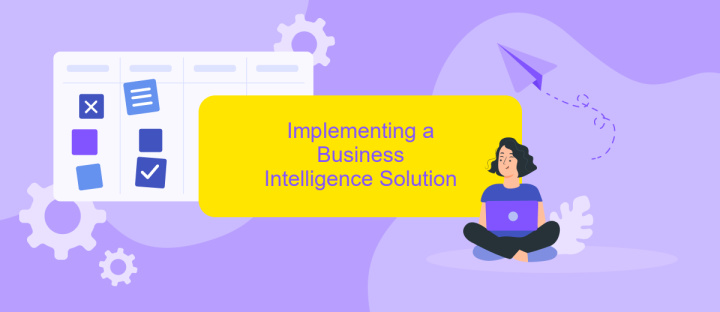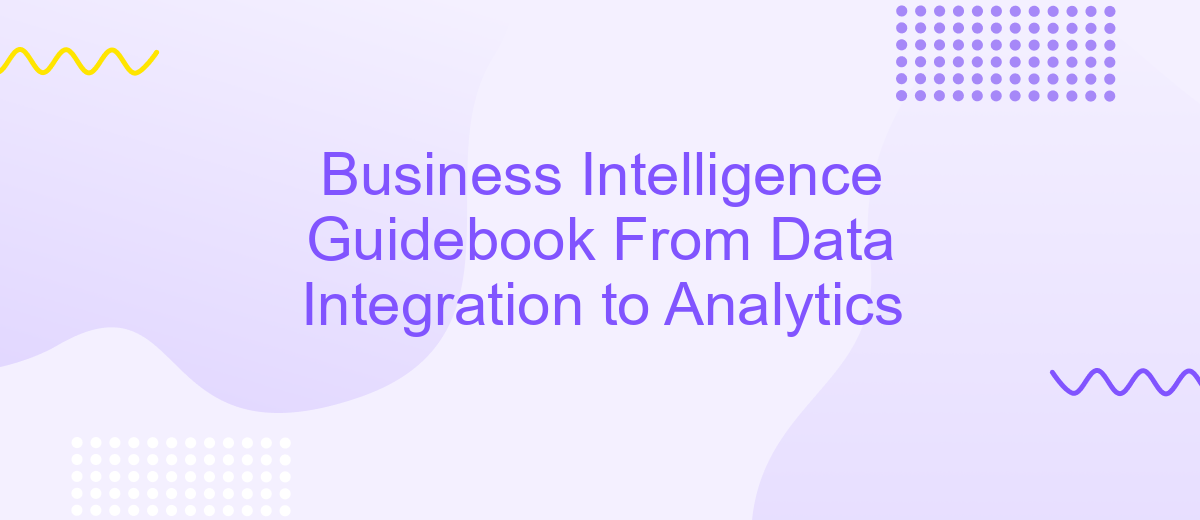Business Intelligence Guidebook From Data Integration to Analytics
In today's data-driven world, businesses must harness the power of information to stay competitive. This guidebook, "Business Intelligence: From Data Integration to Analytics," provides a comprehensive roadmap for transforming raw data into actionable insights. Covering essential topics from data integration techniques to advanced analytics, it equips professionals with the tools needed to make informed decisions and drive organizational success.
Executive Summary
Business Intelligence (BI) is a critical component for organizations aiming to leverage data for strategic decision-making. This guidebook provides a comprehensive overview, from data integration to advanced analytics, to help businesses harness the power of BI effectively.
- Understanding the fundamentals of BI and its importance in today’s data-driven world.
- Exploring various data integration techniques and tools, including ApiX-Drive, which simplifies the integration of multiple data sources.
- Delving into advanced analytics to provide actionable insights and drive business growth.
By following this guidebook, organizations can streamline their data processes, ensure seamless integration, and utilize analytics to make informed decisions. Whether you are just starting or looking to enhance your existing BI capabilities, this resource is designed to provide practical insights and tools to succeed in the competitive landscape.
Understanding Business Intelligence

Business Intelligence (BI) is a technology-driven process for analyzing data and presenting actionable information to help executives, managers, and other corporate end users make informed business decisions. BI encompasses a variety of tools, applications, and methodologies that enable organizations to collect data from internal systems and external sources, prepare it for analysis, develop and run queries against the data, and create reports, dashboards, and data visualizations to make the analytical results available to corporate decision-makers as well as operational workers.
One of the critical components of BI is data integration, which involves combining data from different sources to provide a unified view. Services like ApiX-Drive facilitate this process by automating data integration, allowing businesses to connect various applications and platforms seamlessly. By using such services, companies can ensure that their BI systems are fed with accurate and up-to-date information, enabling more reliable analytics and insights. Effective BI implementation helps organizations identify market trends, uncover business problems, and make data-driven decisions that can enhance overall performance and competitiveness.
Implementing a Business Intelligence Solution

Implementing a Business Intelligence (BI) solution involves several critical steps to ensure seamless data integration and effective analytics. The process begins with a thorough assessment of the organization's data needs and existing infrastructure. This helps in identifying the right tools and technologies required for the BI solution.
- Data Collection: Gather data from various sources such as databases, APIs, and external files. Tools like ApiX-Drive can automate data integration from multiple sources, ensuring accuracy and saving time.
- Data Cleaning: Ensure the collected data is clean and consistent. Remove duplicates, correct errors, and standardize formats to maintain data quality.
- Data Storage: Store the cleaned data in a data warehouse or data lake, making it accessible for analysis. Choose a storage solution that can scale with your data needs.
- Data Analysis: Use BI tools to analyze the data, identify trends, and generate insights. Create dashboards and reports to visualize the data effectively.
- Implementation and Training: Roll out the BI solution across the organization. Provide training to ensure users can effectively utilize the new tools and insights.
Successful implementation of a BI solution empowers organizations to make data-driven decisions, optimize operations, and gain a competitive edge. Continuous monitoring and updating of the BI system are essential to adapt to evolving data needs and technological advancements.
Data Integration and Analytics

Data integration is a critical component in the realm of Business Intelligence (BI). It involves consolidating data from various sources into a unified view, enabling more effective analysis and decision-making. This process ensures that data is accurate, consistent, and accessible, which is essential for generating meaningful insights.
Analytics, on the other hand, is the practice of examining data to uncover patterns, correlations, and trends. By leveraging advanced analytical tools, businesses can transform raw data into actionable intelligence. This helps in identifying opportunities, optimizing operations, and driving strategic initiatives.
- Data Extraction: Gathering data from multiple sources.
- Data Transformation: Converting data into a usable format.
- Data Loading: Storing data in a centralized repository.
- Data Analysis: Using analytical tools to interpret data.
Services like ApiX-Drive facilitate seamless data integration by automating the process of connecting various applications and databases. This not only saves time but also ensures data consistency and reliability. By integrating ApiX-Drive into your BI strategy, you can streamline data workflows and focus more on deriving insights rather than managing data.
Case Studies and Best Practices
One of the most compelling case studies in Business Intelligence (BI) involves a retail company that leveraged data integration and analytics to transform its operations. By using ApiX-Drive, the company seamlessly integrated various data sources, including sales, inventory, and customer feedback. This integration allowed them to create a comprehensive dashboard that provided real-time insights into their business performance. As a result, they were able to optimize inventory levels, enhance customer satisfaction, and increase sales by 20% within six months.
Another notable example is a healthcare provider that implemented BI tools to improve patient care and operational efficiency. They utilized ApiX-Drive to integrate patient records, appointment schedules, and billing information into a unified system. This integration enabled healthcare professionals to access critical information quickly, leading to more accurate diagnoses and faster treatment times. Additionally, the analytics provided by the BI system helped the provider identify trends in patient care, resulting in a 15% reduction in hospital readmissions.
FAQ
What is Business Intelligence (BI)?
How does data integration fit into Business Intelligence?
What are some common tools used for data integration in BI?
How can businesses automate their data integration processes?
What are the benefits of using BI analytics for a business?
Apix-Drive is a simple and efficient system connector that will help you automate routine tasks and optimize business processes. You can save time and money, direct these resources to more important purposes. Test ApiX-Drive and make sure that this tool will relieve your employees and after 5 minutes of settings your business will start working faster.

